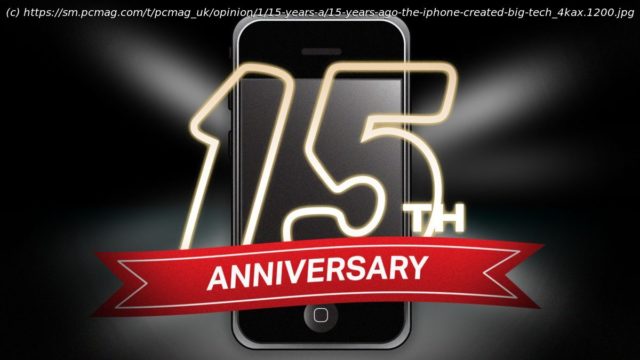The iconic consumer smartphone birthed a power shift the world is still reeling from.
Fifteen years ago, on Jan.9,2007, I sat on the floor of a Las Vegas Convention Center entryway and pondered the iPhone. While I was running around the Consumer Electronics Show looking at the latest LG Chocolate, Steve Jobs was over at Macworld changing the world. I’d been covering smartphones for three years by then, and they were complex gadgets for road warriors. Apple simplified the smartphone and made it a must-have for everyone. This wasn’t solely about Steve Jobs’ brilliance. He struck when several other technologies were becoming available—3G for the mobile web and capacitive touch screens for finger-friendly interfaces. And he worked without the legacy-software hangovers that Microsoft, Nokia, and Palm all struggled through from the first generation of proto-smartphones. The iPhone has made a huge number of things easy, which were previously the province of techies. Mobile social networking and image sharing apps, the great 4G applications, generally came to the iPhone first throughout the early ’10s, transforming how we use our devices, interact with our friends, and see our world. But with that has come a stifling feeling of control. Two companies, Apple and Google, now control pretty much all the mobile platforms in the US; two manufacturers, Apple and Samsung, sell the vast majority of phones. Three platforms, Facebook, Twitter, and TikTok, manage much of our discourse. There are a bunch of things I didn’t get right in my early iPhone analysis because I was looking at the phone that was, not at the future. (Also, Steve Jobs tended to lie.) Apple’s AT&T exclusive, especially, distorted the market in ways that made the phone look less dominant and less revolutionary than it was. When I reviewed the first iPhone, I think I properly understood the importance of the new interface, but I got stuck on its lousy phone-calling quality and how it didn’t support many desktop Web standards.






